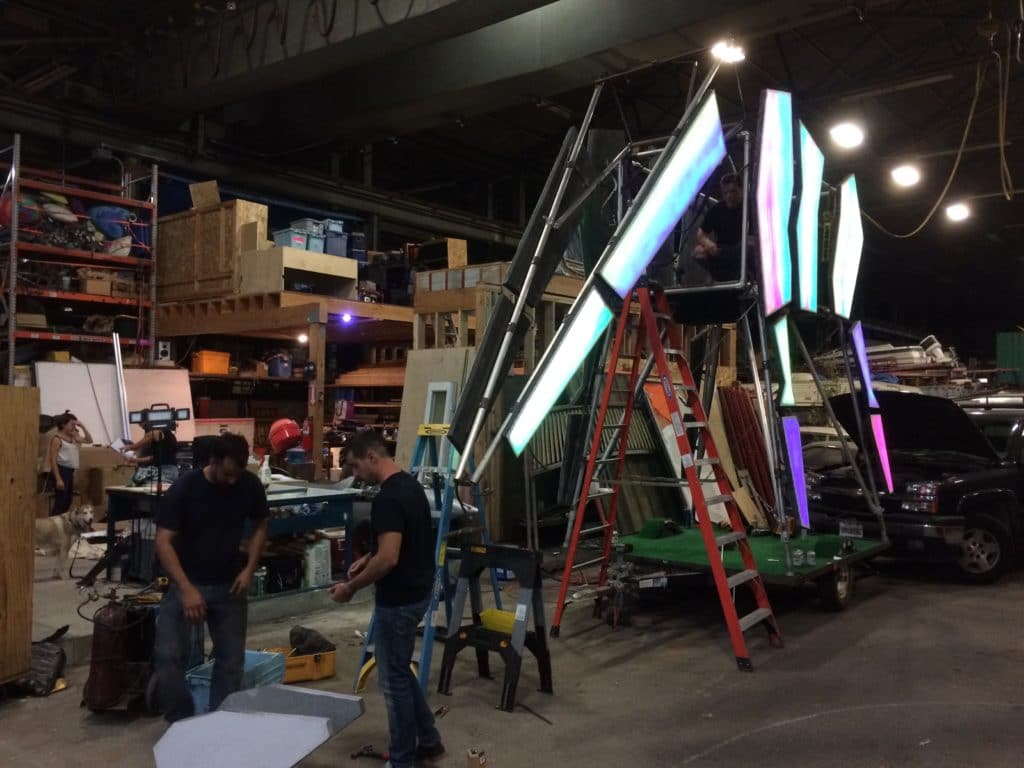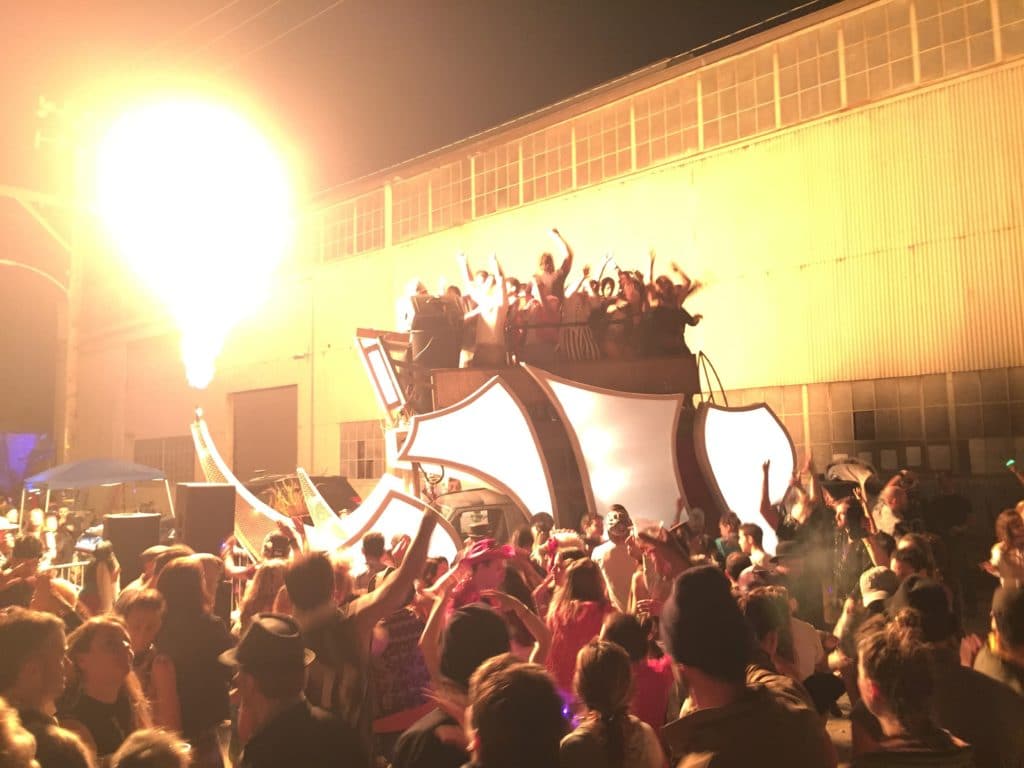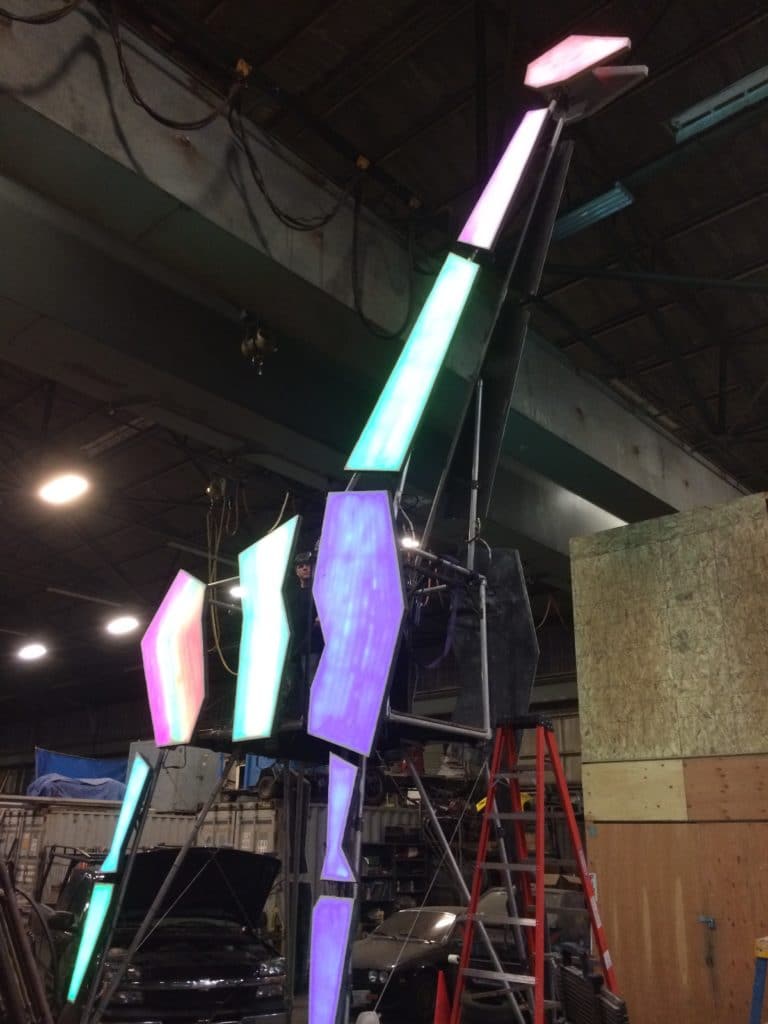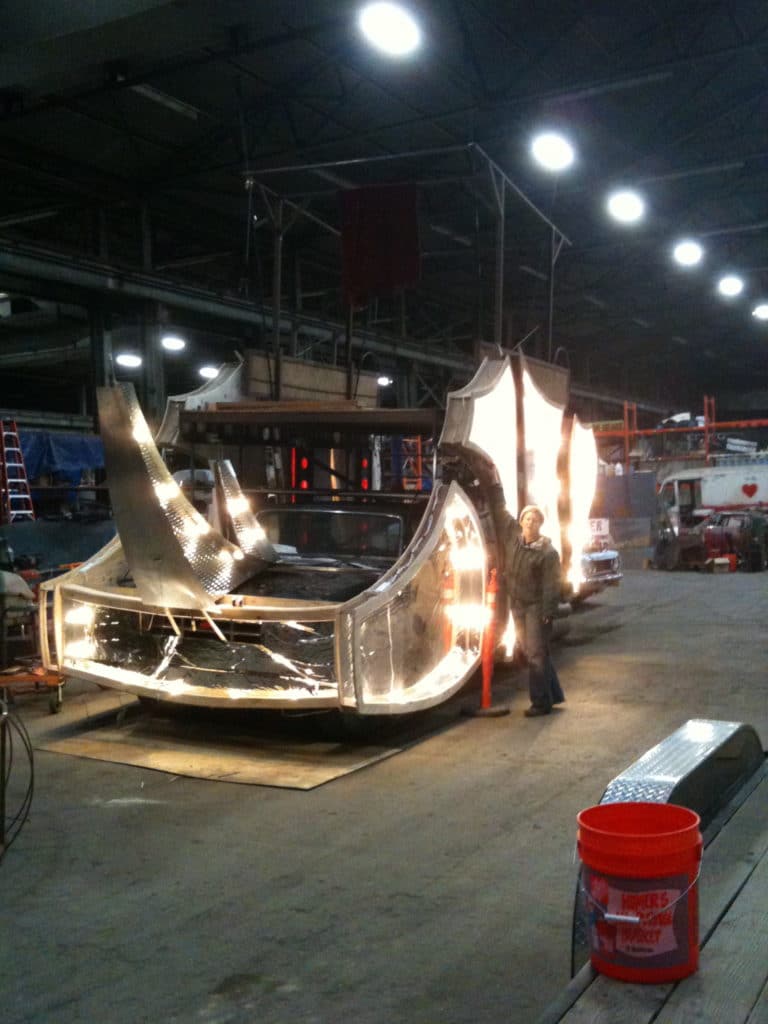Almost everyone has heard of Burning Man, the annual event that brings tens of thousands of people together in a temporary city in the Nevada desert to celebrate art, self-expression, and self-reliance. But not many people know how active the Burning Man community is the rest of the year, or how important the spaces are that house and support all that creativity.
I’ve been going to Burning Man since 2013. I’m part of Dusty Rhino, a camp which is based in and has a very active presence in San Francisco. The two people who founded it are a custom metalworker/sculptor and the owner of a general contractor business here in San Francisco. This community exists because of people who are highly skilled in design and innovation and are also willing to take risks with their creativity.

The sole purpose of any Burning Man camp is to honor a state of ‘wonder’ by giving that feeling back to the community and letting people explore in a way they couldn’t under ordinary circumstances. For Dusty Rhino, one way of giving back means holding a number of events throughout the year so people who aren’t able to get to the Nevada desert can directly experience some of the raw, unbridled creativity of Burning Man. We take part in parades and events in San Francisco and throughout the greater bay area. We drive an art car in the shape of a rhinoceros — that breathes real flames from its horn in time to music. We hope that what we do inspires those who experience our friendly, fire-breathing rhino to think outside of norms and apply the skill sets they’ve gained from their “default life” (as Burners call life outside Burning Man) to things the unconventional things they’re passionate about.

Early this summer, Dusty Rhino held an event at the old naval air station on Alameda Island. This was the first time we were able to attain a permit to drive people around in our art cars. Young families and non-Burners had the chance to taste the Burning Man experience in a wide open air on a beautiful, sunny day. The light was so much like it is in the desert—it was magical for us to be able to share that ride washed in pale sunlight.

All the members of Dusty Rhino have different skill sets and pitch in many different ways. Coming from a design background, I’ve helped set up 3D models for art installations and prepped for digital fabrication methods like large scale laser cutting and CNC milling. Some of our regular installations include a giant light-up giraffe that stands 17 feet tall and collapsible tensile community spaces (that we call “delta structures”). These are shade structures we design and rebuild every year. We call them ‘delta’ structures because they look like two giant extruded triangles (deltas) that are rolled away from each other, connected by a tensioned fabric and fastened to the ground – and the template can be adjusted to whatever size is needed.
Everything we make, of course, is temporary and mobile—we design and build it so it can easily be broken down and trucked away after Burning Man is over. We have a shipping container that holds most of our artworks, and the rest we truck in. Some items, like the delta structure, gets burned at the end of each Burning Man, and a new shade structure is made from those template instructions just like a Sol Lewitt art piece.

Between events, we store everything in warehouses around the Bay Area. But these warehouses are more than just storage spaces. Recently I gave a presentation at Pfau Long explaining the importance of these warehouses – these warehouses are where so much of the concept design, coordination and actual making happens. Everything leaves these warehouses as a ‘kit of parts’ or modules that can quickly be assembled under intense desert conditions (high winds, extreme heat and extreme cold), to give back to all the other desert goers. Even though there is realistically only 5-6 days any art piece is ‘finished’ and fully functional at Burning Man, it takes several months of intense collaborative work to ramp up to the event. These warehouses, for our camp and many others, are active, creative spaces year-round — they’ve become de facto art hubs.
Dusty Rhino stores & produces art at American Steel Studios in Oakland. In the past, everyone had been able to weld and build there without any issues, taking shifts helping at all hours of the day and night – whatever available time they have outside their default lives. However, after the Ghost Ship warehouse fire in Oakland, there is a lot of fear and uncertainty, even though unlike at Ghost Ship, no one lives at American Steel. In November of last year, new owners bought American Steel, requiring extensive permitting for active work and enforcing rules typical of corporate business not studio art spaces. Many of the artists who rented space there have already been kicked out and the remainder feel like their time is limited.

Many are actively looking elsewhere. And unfortunately, a lot of less reputable spaces have come up as options throughout the greater Bay Area. It seems that as the city of Oakland tries to crack down on these kinds of art spaces, they haven’t figured out how to support the places that are ‘mostly’ living up to code and are having trouble finding & pursuing the places that are the most dangerous. They aren’t recognizing the difference between the consortium of talented knowledgeable builders and designers who are constructing these art hubs to the slum landlords ignorantly building out unsafe spaces for the ‘starving artist’.
The new owners of American Steel have been supportive and want to work with artists, within what they think is reasonable and safe. But the crackdown risks pushing responsible artists into less legitimate spaces. It brings into question what is reasonable to demand of artists who are on the margin. What about artists who don’t have funds for expensive and extensive city permitting and inspections in order to be deemed “safe”? What about those who know how to build “safely” but can’t afford the paper-trail upkeep & endless regulation the city requires in order to recognize that safety?
Cities have to distinguish a middle ground that is both safe and affordable. Burning Man pushes the envelope for artists everywhere, sparking new thinking by creating a space that enforces self-reliance over regulation. Figuring out a way to support that creativity without shutting it down is a challenge we all need to rise to - because we all need a fiery rhinoceros in our lives from time to time.
